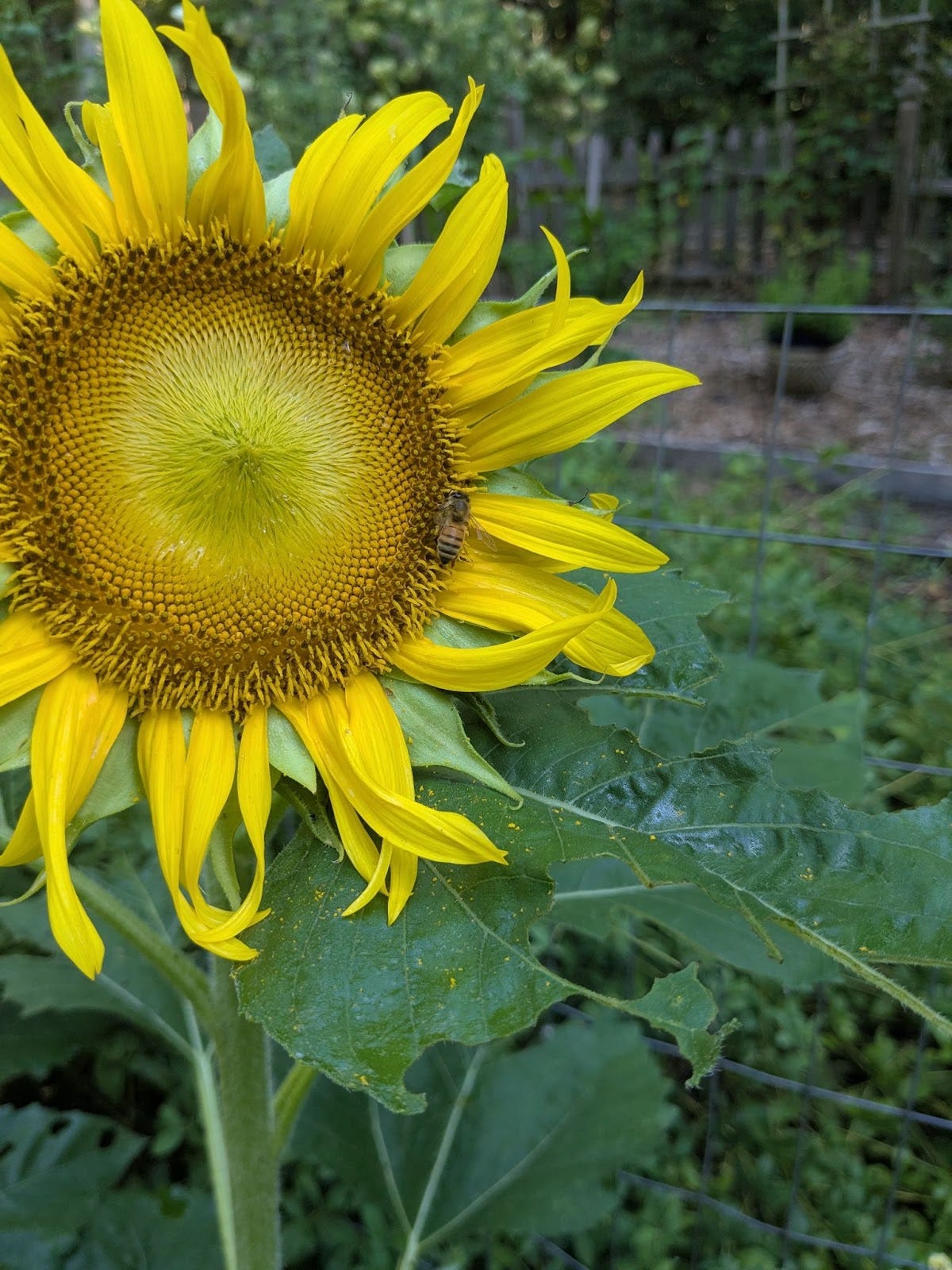Sun, Sunflower, Goldfinch
I am interested in the between places: porches, leaf litter, the forest edge, dreams, river banks. In Walden, Henry David Thoreau sits at the door of his humble cabin, between inside and outside, at the edge of forest and pond, at the edge of mind and time. He knows this threshold is far more than literal:
There were times when I could not afford to sacrifice the bloom of the present moment to any work, whether of the head or hands. I love a broad margin to my life. Sometimes, in a summer morning, having taken my accustomed bath, I sat in my sunny doorway from sunrise till noon, rapt in a revery, amidst the pines and hickories and sumachs, in undisturbed solitude and stillness, while the birds sang around or flitted noiseless through the house, until by the sun falling in at my west window, or the noise of some traveller’s wagon on the distant highway, I was reminded of the lapse of time. I grew in those seasons like corn in the night, and they were far better than any work of the hands would have been. They were not time subtracted from my life, but so much over and above my usual allowance. (Walden, “Sounds”)
“Liminal” is a word on the edge, before and between. In Classical Latin, its heritage is “limen,” literally threshold. Celtic culture celebrates the liminal, the “thin places”: they mark the edges of spiritual perception. The liminal is a place, it seems, to get lost, a lostness in which you may find yourself. It has a murky relationship with time, at the intersection of kairos and chronos; it is in-breaking or interruption, a cracked mirror or a cracked shell.
The porches on the east and west ends of our home are our liminal spaces, the thresholds where we linger between the inside and the outside, quite literally. They are where we eat and drink and talk, where I find myself in the morning with coffee and in the evening with beer. I tend to do nothing productive there, save perhaps for shelling peas, which is, in and of itself, more meditation than work, though the meditation does indeed make the meal richer.
Like Thoreau, I hold that
if the birds and flowers had tried me by their standard, I should not have been found wanting. A man must find his occasions in himself, it is true. The natural day is very calm, and will hardly reprove his indolence.
Most mornings in summer, in the cool of the day, I sit on a porch that faces east, watching the shifting light through the tree line, listening to the birds offering their commentary on the morning; I can rarely decipher their intent, though I much appreciate their song. We have a fig tree north and east of the porch that currently attracts tanagers for breakfast. A raucous batch of crows call out over the flitting song of the finches; the distant drum of a nuthatch is interrupted by the laugh of a red bellied woodpecker. Our dogs linger with me, though their ears and eyes are more attuned to predators and thus follow the track of the red-shouldered hawks. They will rouse me from the morning reverie most often with a nose that denotes they are ready for their breakfast; the squawk of a chicken above the murmur of crickets signals the same. Such times are best when my mind remains with the bird song rather than the complexity of the day’s calendar.
After lingering on the porch, I walk through the gardens, not to pick, prune, weed, or mulch, but simply to look; here is another threshold, the space between house and woods, between the fully domestic and the wild, between the land cultivated by humans and the land cultivated by the more-than human, the forest ecosystem.
The garden since Adam has served as a liminal space, the very first place that we humans met God. I am, like the birds, deeply attracted to its beauty, but I stay for its food. In the midst of August, the sunflowers have given over their gold and green; they no longer track the sun. Their heads are bowed as if attending their own funerals, a solemn set of monks offering a silent chant. Just weeks ago, with shining faces wearing a sunny yellow, the very essence of a child’s drawing of the sun, they mirrored their namesake and chased the sun. Now, determined and acrobatic goldfinches hang upside down for a morning meal. Then perching atop the now bottom-up flower head, they linger with their bounty, leaving seed shells scattered in the cupped underside.
I grow sunflowers for their show and for the spiritual kinship, follower of Helios that I am. I harvest some as a treat for the chickens, a small part of a rich menu they enjoy in summer. Yet my favorite use (though “use” is far too pedestrian a term) for sunflowers is as food and playground for the goldfinches. I never saw goldfinches here until I started growing sunflowers; now each summer, they come for the seeds. They never allow me to get close, but their color calls me even as their chatty songs spill over the garden. Still, I linger (knowing that stalking is best done standing still), and see this world anew: sun, sunflower, goldfinch, my eyes seeing the sunlight bounce off these so one with the sun, my mind seeing the sun in the seeds, now in the goldfinches, the yellow sun in the glowing feathers, the sun now in me, this gift of flower and bird and sun.



